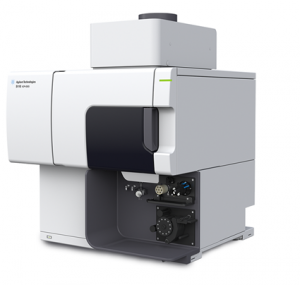
Inductively coupled plasma atomic emission spectrometry (ICP-AES), also referred to as inductively coupled plasma – optical emission spectrometry (ICP-OES), is an analytical technique used for the detection of trace metals. It is a
type of emission spectroscopy that uses the inductively coupled plasma to produce excited atoms and ions that emit electromagnetic radiation at wavelengths characteristic of a particular element. The intensity of this emission is indicative of the concentration
of the element within the sample.
Argon gas is ionized in an intense electromagnetic field. A stable, high temperature plasma of about 7000 K is generated as the result of the inelastic collisions created between the neutral argon atoms and the charged particles. A peristaltic pump delivers
an aqueous sample into a nebulizer where it is changed into mist and introduced directly inside the plasma flame. The sample immediately collides with the electrons and charged ions in the plasma and is itself broken down into charged ions. The various
molecules break up into their respective atoms which then lose electrons and recombine repeatedly in the plasma, giving off radiation at the characteristic wavelengths of the elements involved.
Within the optical chambers, after the light is separated into its different wavelengths, the separated colors fall upon an array of semiconductor photodetectors. The intensities of all wavelengths (within the system’s range) can be measured simultaneously,
allowing the instrument to analyze for every element to which the unit is sensitive all at once. Thus, samples can be analyzed very quickly. The intensity of each line is then compared to previously measured intensities of known concentrations of the
elements, and their concentrations are then computed by interpolation along the calibration lines.
If you would like to find out more about Atomic Emission Spectoscopy or other technologies and services provided by American Assay Labs, please contact us and we’ll be glad to assist you with your goals.

